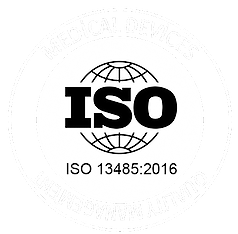
Hungry for Data
Whether your implantable device is designed for monitoring or therapy delivery, data acquisition and analysis play a critical role in optimizing patient outcomes. Ongoing data collection from implantable devices allows early detection of trends and potential issues, and can be used for automated or patient-initiated regulation of therapeutic devices. In addition, both biosignal data and device operational metrics provide useful input related to device functionality, which can be helpful for improving future design iterations.
At the same time, data acquisition and analysis strategies for implanted devices must be balanced with the limitations of these devices in terms of storage, memory, and ultra-low power consumption.
“Future Cardia will obtain the most comprehensive, long-term cardiac data to date as biomarkers for cardiology. This will allow us to venture into predictions for cardiac events, and human longevity study.”
Commonly Collected Data Types
Physiological parameters: Implantable devices gather a range of physiological measurements, depending on their diagnostic or therapeutic goals. These can include electrical signals like EGM, EEG, or EMG, as well metrics like heart rate, respiration rate, body temperature, and patient activity level. Some implants may collect specialized data like blood pressure, bioimpedance, or some other proprietary measurements specific to their purpose.
Therapy-specific data: Implants that deliver therapy monitor physiological parameters connected with the specific condition they treat. They gather therapy-specific metrics before, during, and after therapy delivery to enable assessment of efficacy and improvement of therapy protocols. This data often includes measurements of how quickly therapy takes its intended effect, how much therapy was required to obtain that effect, and the device settings and configuration at the time therapy was delivered.
Device performance data: Device parameters such as battery life, signal integrity, and sensor accuracy are critical to ensuring the device functions as intended. These types of data are important for assessing device functionality, longevity, and reliability.
Fault detection: Implantable devices must regularly verify the integrity of their memory, internal timing sources, and programmable parameters and undertake other self-testing to ensure that they operate reliably. Therapy devices may also verify their electrical connections to the patient.
External data: Devices that are part of the overall implantable system, such as chargers, programmers, or patient home monitors may collect data as well. The temperature of a charger, for example, can be critical to patient safety, and environmental parameters like ambient temperature, pressure, or humidity may be important to system performance and reliability.
Questions to Ask
Who is the user of the data? Is it the health provider, the patient, the device manufacturer, or a combination of the above? Healthcare providers and device manufacturers might need detailed data for diagnosis and treatment planning, whereas patients might need simpler, actionable insights to manage their condition or adjust device settings.
How will the data be used? Delving deeper into the application of the collected data can influence the optimal data collection strategy. Will the data be used for real-time monitoring, long-term health trend analysis, emergency notifications, or a combination of these? For instance, real-time monitoring requires robust and reliable wireless transmission capabilities, while trend analysis might demand more substantial data storage and sophisticated data analytics tools.
With what systems does the data need to integrate? Integration with existing healthcare IT systems, such as Electronic Health Records (EHRs), patient management systems, and remote monitoring platforms is critical for seamless use of the data. Understanding these systems' requirements early on can significantly influence device development – ensuring compatibility and facilitating easier adoption by healthcare providers and patients. Consider the data formats, transmission protocols, and security standards these systems use and how your device will comply with them.
“Remote patient monitoring (RPM) led to a 50% reduction in 30-day hospital readmissions for patients with heart conditions.”
Source: Medical Economics
Top Trade-offs to Consider
Operating in the ultra-low power setting of an implanted device requires a balance between data collection parameters and power consumption. More detailed data may provide deeper insights, but at the cost of increased storage space, wireless transmission times, and on-board processing power. Greater power consumption means more frequent battery replacements, resulting in added cost, risk, and patient discomfort. However, insufficient data quality or quantity can lead to reduced efficacy of therapy, lower quality of patient care, and lower-quality input for future product evolution. A careful consideration of the tradeoffs is necessary to optimize implant performance for a specific application.
Sampling resolution: Sample rate and resolution should be optimized to provide the precision necessary for the implantable system to perform its primary functions – both in the current product revision and in future product evolutions. For example, basic rate-based cardiac sensing can be accomplished with as little as 8 bits and 128 samples per second, while advanced morphological or frequency-domain analysis may require 24 bits and a 1kSPS rate. In this example, the more robust data sampling requires 24x as much power to acquire, store, and transmit – so such high resolution should not be chosen casually. It is generally wise to err on the side of a little too much data, but being too conservative can easily lead to an order-of-magnitude increase in the power burden for managing data within the implant.
Storage frequency: As with data resolution, the regularity with which data is collected, stored, and transmitted should also be matched carefully to the application. Most implantable devices require some manner of real-time data acquisition and monitoring – either to assess the need for therapy delivery, or to trigger a detailed recording of biosignals or other patient metrics. But much of the detailed data used for these decision-making processes need not necessarily be stored and transmitted. The choice for how and when to store data for later transmission out of the implant and subsequent analysis depends on the nature of the data and its intended use. In therapy applications, the state of patient parameters prior to therapy delivery can be extremely useful in assessing both patient health and device performance. In monitoring applications, a sufficient recording duration of key metrics and signals is necessary to properly diagnose a patient’s condition. The growing role of AI and machine learning in healthcare is pressing implantable systems to provide as much data as possible. But in every application it’s important to ensure that data truly adds value for the patient, to balance the increased complexity and risk associated with regular battery charging or device replacement.
Noise and signal quality: Noise is a key concern with every signal acquisition application, and the small scale of biosignals elevates that concern when you’re monitoring electrical activity in the human body. Understanding what components of your biosignals of interest are important and how much noise your algorithm can tolerate are critical to optimizing power in your signal acquisition process. Lower noise and broader bandwidth in a biosignal amplifier chain generally lead to higher power consumption and require additional circuit board space. While the use of custom silicon provides significant advantages for minimizing noise, power, and space for a given set of amplifier parameters, the same tradeoffs apply though on a different scale. With an understanding of which biosignal features are truly critical to an application, it is possible to optimize amplifier gain and passband to achieve suitable signal quality while limiting power consumption to the minimum necessary.
“We all want to collect more data. Understanding the implications of data acquisition on power and storage requirements is critical for optimizing device design for maximum performance and usability.”
KC Armstrong, Nocturnal
It’s Never Too Early to Start Thinking about Data vs. Power
For medical device entrepreneurs, the journey from concept to implementation is filled with challenges and trade-offs. Optimizing data acquisition is an important consideration that can impact the efficacy, adoption, and longevity of your implantable medical device. The earlier these considerations are incorporated into the design of your device, the easier it is to avoid roadblocks and complications that can elongate product development cycles.
Interested in diving deeper into the optimal data acquisition strategies for your device? Contact us to schedule a consultation.


